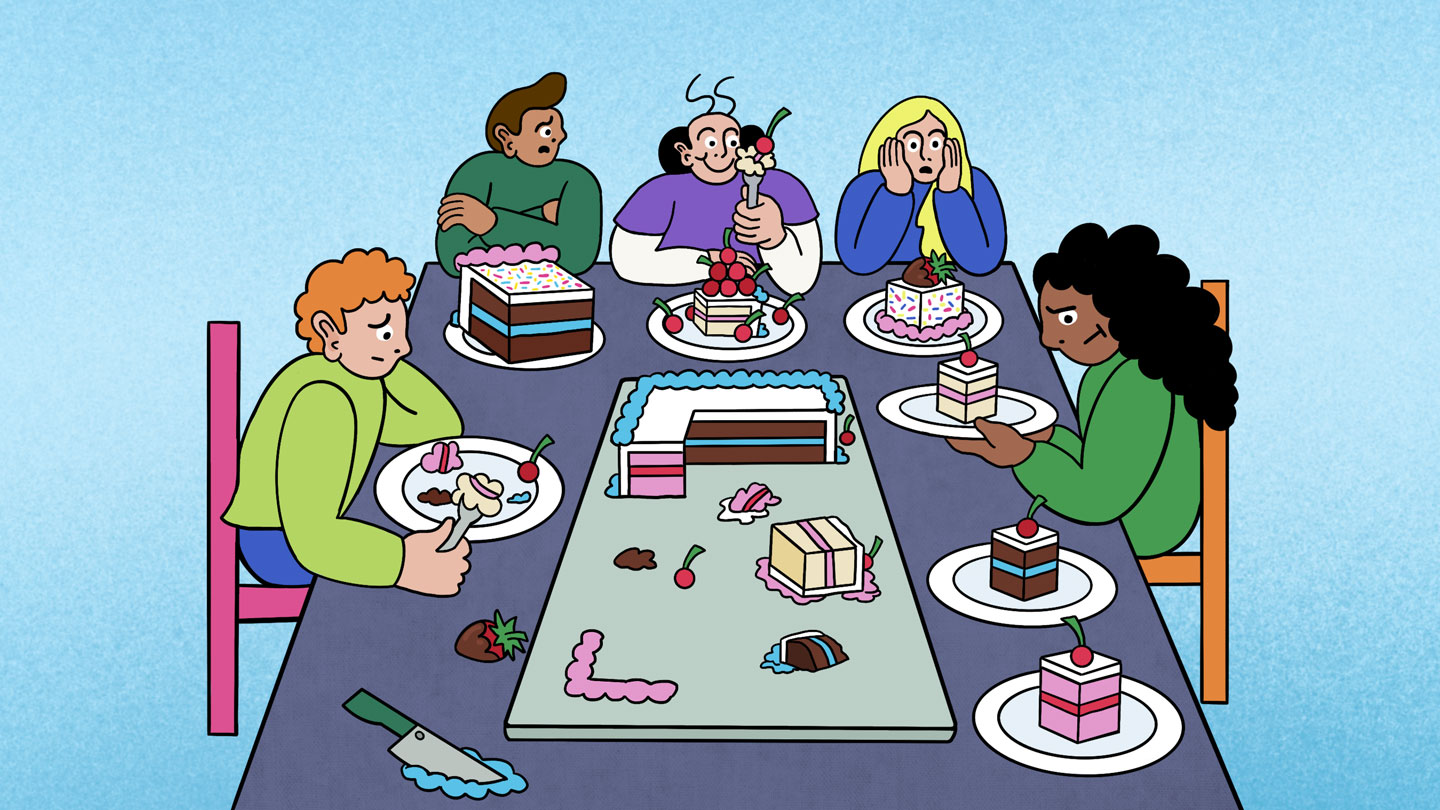Ariel Procaccia has thought a lot about how to cut cake over the last 15 years. That’s partly because the Harvard computer scientist has three children who among them have celebrated more than two dozen birthdays. He knows what it’s like to stand with a knife before a layered masterpiece, frosted with buttercream and chocolate curls, while pressed on all sides by small partygoers who instinctively recognize when someone else gets a better slice.
The answers reach far beyond birthday parties. Cake-cutting contemplation is part of a sprawling mathematical subfield focused on the fair division of resources. It has spurred a raft of algorithms informing how to allocate food among hungry communities, how to split rent or chores among roommates, how to draw boundaries for fair voting districts and more. A mathematical problem at its heart, cake cutting connects rigorous reasoning to questions of human preferences and real-world issues, and so attracts not only mathematicians, but also computer scientists, economists, social scientists and legal experts. Questions of fairness (and unfairness) are decidedly universal. Of course, so is dessert. “It’s this very elegant model in which you can really distill what fairness is, and reason about it,” Procaccia says.
The cake, says Steven Brams, a game theorist and political scientist at New York University, is a metaphor for any divisible good, like land or time or limited resources. When cake-cutting insights are applied to settling international disputes, he says, “we are potentially helping the world find solutions.”
Experts have come up with cake-cutting algorithms — the mathematical rules for describing how to cut a cake fairly — many times and in many guises. (The approaches almost always focus on rectangular cakes. The related but more recent “pie-cutting” problem addresses circular desserts or pizza.) The easiest rules reveal how to fairly share a cake between two people: One person cuts the cake into two pieces that they believe to be equal in value, and the other person picks first. Each eater receives a piece that they feel is at least as valuable as the other’s, if not better. Reports of this fair division strategy date back to ancient Greece.
2023-09-08 06:00:00
Link from www.sciencenews.org





















